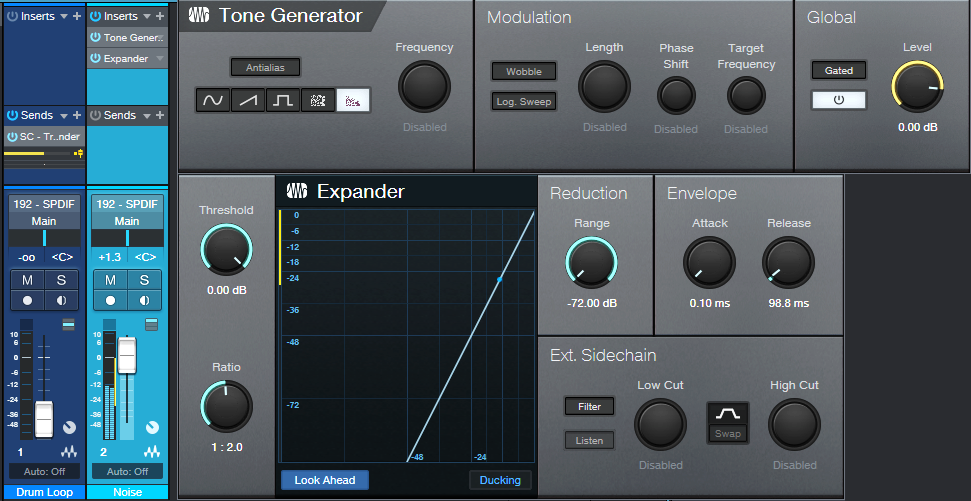Studio One’s VCA Module

A modular synthesizer’s VCA (Voltage-Controlled Amplifier) changes gain in response to an input control voltage. One of my favorite applications is controlling a VCA with an envelope follower—for example, using an envelope follower on drums, and running power chords, pads, or sustained synth sounds through the VCA. Then, these sounds take on the percussive characteristics of the drum part. But Studio One doesn’t have a VCA, right?
Actually, it does—the Expander. You can set up the Expander to act like a VCA, with its gain controlled by a sidechain signal. So, in the example above, you can run sounds like guitar chords through the Expander, and feed the Expander’s sidechain from a drum track. Here’s what it sounds like.
[Caption] The first four measures, drums modulate the guitar. The second four measures use the Analog Delay to provide an additional 1/8th-note rhythm.
Test Setup
Fig. 1 shows a test setup to play around with this process, and hear how it works. Insert a drum loop in one track. Normalize it so the signal level is consistent. The drums provide the sidechain signal.
In another track, insert the Tone Generator set for pink noise, followed by the Expander. Using pink noise makes it easy to hear how adjusting Expander parameters alters the pseudo-VCA’s response to drums.
Start with the Expander settings shown in fig. 1, and assign a pre-fader send from the drum track to the Expander’s sidechain. Note that when you assign a sidechain to the Expander, it automatically selects Ducking mode. You don’t want this, so de-select Ducking.

Start playing the drum loop, and you should hear the white noise’s amplitude being modulated by the drums. If not, make sure the drum track send provides enough level to the expander sidechain. Here’s how the Expander controls affect the sound.
- Release: Start by varying the Release. Longer times add a decay to the pink noise.
- Attack: This isn’t as useful with percussive sounds, because the sound is over before the attack can complete. But if the sidechain signal is coming from something like a pad, you’ll hear an attack time superimposed on the noise.
- Range: This acts like a bias voltage for the VCA, that always keeps it somewhat open. It’s good for when you want the VCA to be affected only by the drum peaks.
- Threshold: Lower this to pick up more of the peaks. It’s kind of like compressing the sidechain signal.
- Ratio: Higher ratios make the effect more percussive, to the point where the sound is so percussive you might not hear the drums anymore. Lower ratios create a less percussive sound, somewhat like changing the ratio.
Now that you know what this technique can do, start running other signals through the Expander. And by the way—automating Threshold and Release can add some serious animation to the percussive effects. Check it out!